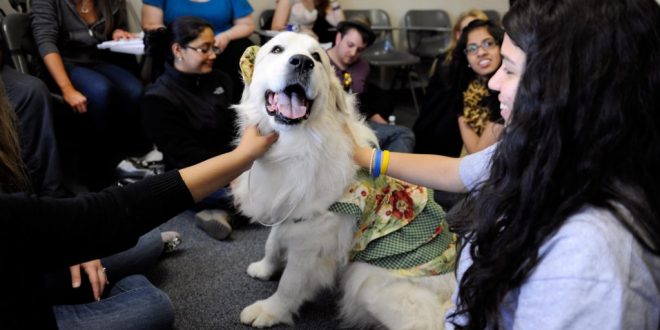By Julie Broch
Therapy dogs have been used in many schools throughout the nation to provide comfort and support to the students, as well as reduce stress. These dogs also make the students feel as though there is a bond between them, which can really benefit students in difficult situations. But what are therapy dogs? According to The Conversation, “The role of therapy dogs is to react and respond to people and their environment, under the guidance and direction of their owner”. For example, an individual might be encouraged to gently pat or talk to a dog to teach sensitive touch and help them be calm.” These dogs are trained to improve a person’s social and emotional wellbeing through something called the human-animal bond, which impacts both the human and the animal positively. In humans, this bond reduces stress physiologically, and the attachment responses trigger a hormone called oxytocin that increases trust levels. These dogs also help the humans develop social skills, learn empathy, and understand social cues. The trust level of the dogs is also increased after bonding with the human. At schools, therapy dogs are used not only to decrease stress and anxiety, but also to increase students’ motivation towards learning, help students gain confidence, and improve relationships between students and teachers. The attendance rate also went up in schools that used therapy dogs. Overall, more schools should consider using therapy dogs to improve their school’s environment and increase mental health in their students.
 Tempus Magazine By Students, For Students
Tempus Magazine By Students, For Students 



